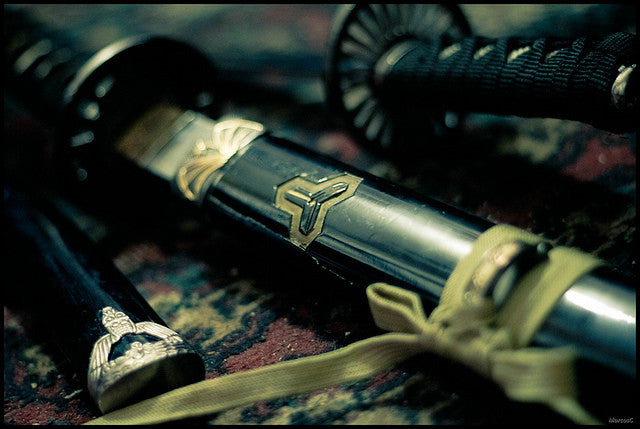Your Cart is Empty


Want to learn more about traditional Japanese swords? You should begin by familiarizing yourself with the following terms associated with them.
Shaku
When shopping for traditional Japanese swords, you'll probably come across the word shaku. A shaku is essentially a measurement unit of about a foot (11.93 inches). It's important to note, however, that prior to 1891, a shaku was slightly longer at 13.96 inches.
Sun
Another unit of measurement used to describe the length of traditional Japanese swords and their blades is sun. A sun is a smaller unit of measurement, equal to 1/10 shaku. Therefore, it's not uncommon to find swords measured in both shaku and sun.
Tsuba
Many Japanese swords feature a hand guard known as a tsuba to prevent the user's hand from sliding up the blade and causing injury.
Ashi
An ashi is a thin and narrow line that runs alongside the temper line to the sword's cutting edge.
Ha
The ha is simply the cutting edge of a Japanese sword.
Budachi
The budachi simply refers to all Japanese swords used for militaristic purposes.
Yokote
The yokote, also known as the transition line, is the line that separates the sword's blade with the tip.
Hamachi
The hamachi is a notch in the cutting edge of a traditional Japanese sword. It's intended to divide the blade from the tang.
Obi
While technically not a component or part of a Japanese sword, the obi still a key term associated with traditional Asian swords. It's a type of lightweight sash that's worn by men and women. Reports indicate that from 1600 to 1867, Japanese samurai warriors carried their swords by placing them through the obi.
Chigusa
Produced almost exclusively in Harmia, chigusa is a type of steel that's characterized by the presence of 0.7 to 0.8% carbon content.
Hataraki
These are patterns, shapes and geometric designs that appear on the surface of a Japanese sword. Hataraki are created through polishing.
Tamahagane Steel
Tamahagane steel is a special type of steel that's made of iron sand. It typically contains around 1 to 1.5% carbon, and it's synonymous with high-quality traditional Japanese swords. In addition to swords, however, tamahagane steel is also used to produce knives and tools.
Denaori
When a blade is retempered, it's known as a denaori.
These are just a few common terms associated with traditional Japanese swords.
Photo credit: Marcos